Audi quattro classic cars for sale
The Audi quattro changed the world in 1980 as the first series production coupe with permanent all-wheel drive and turbocharging. Built with technical sophistication, the quattro sported a unique five-cylinder turbo engine and made history in rally sport, leaving a profound impact on the evolution of high-performance vehicles.
Search results
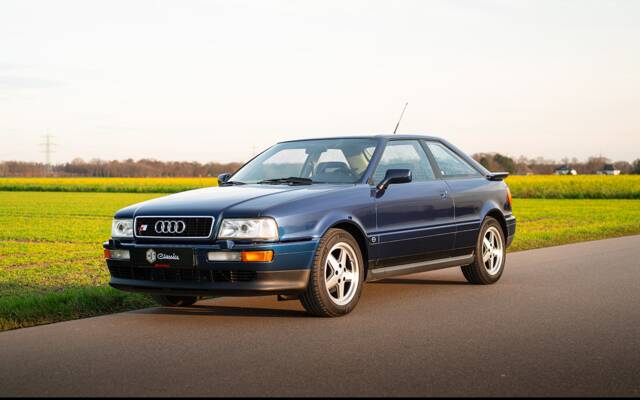
1991 | Audi quattro 20V
S2 quattro - 61.500 km! Erstlack! Originalzustand!

1983 | Audi quattro
Audi Quattro Turbo M1080
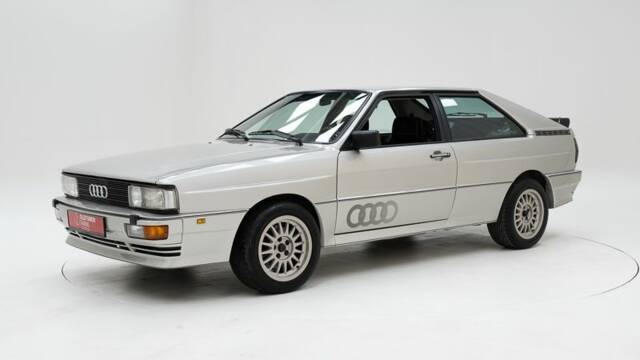
1983 | Audi quattro
1983 Audi Quattro '83
Audi quattro listing references from Classic Trader
Below you will find listings related to your search that are no longer available on Classic Trader. Use this information to gain insight into availability, value trends, and current pricing for a "Audi quattro" to make a more informed purchasing decision.

1985 | Audi quattro
1985 Audi Quattro SWB Replica 'Shorty'

1983 | Audi quattro
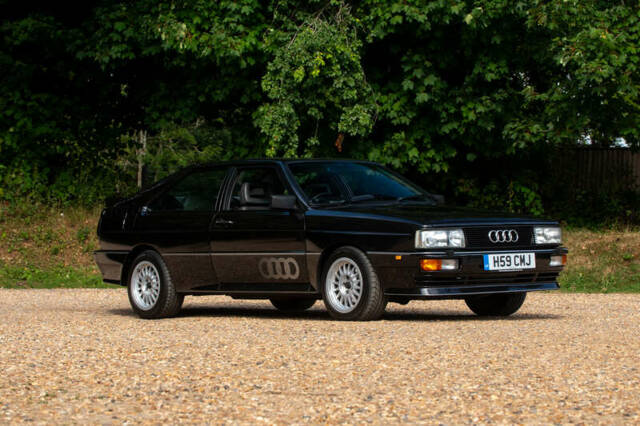
1990 | Audi quattro 20V
1990 Audi Quattro 20v - ex-Jay Kay

1984 | Audi quattro
Treser
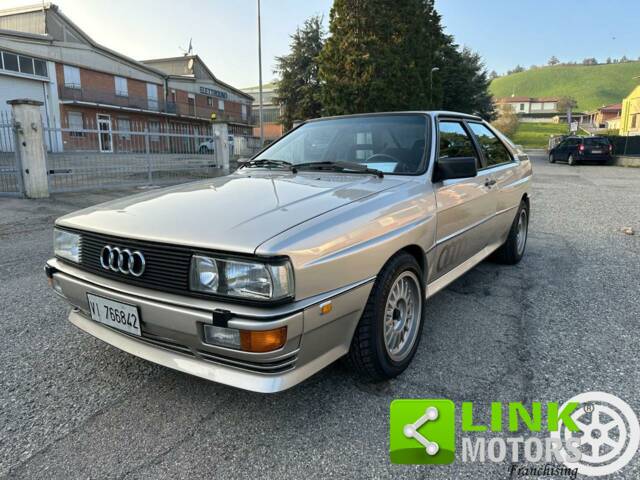
1985 | Audi quattro
AUDI QUATTRO 2.2 turbo

1985 | Audi quattro
1985 Audi Quattro WR 10v
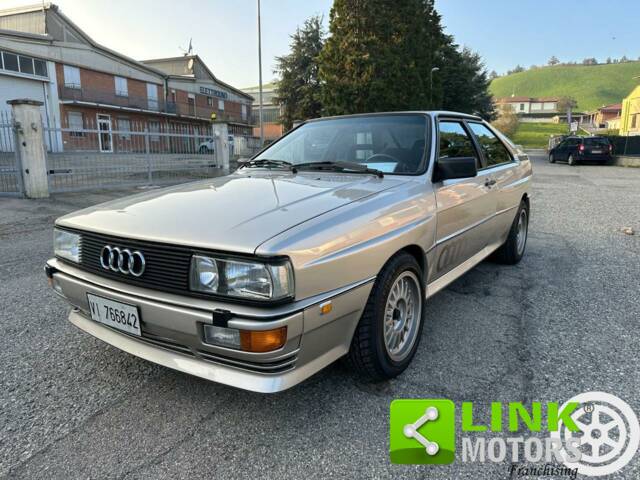
1985 | Audi quattro
AUDI QUATTRO 2.2 turbo
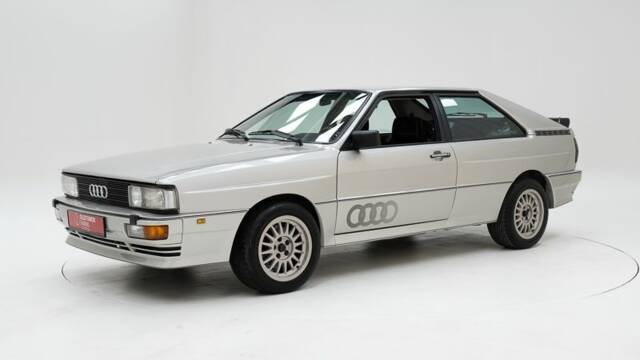
1983 | Audi quattro
1983 Audi Quattro '83
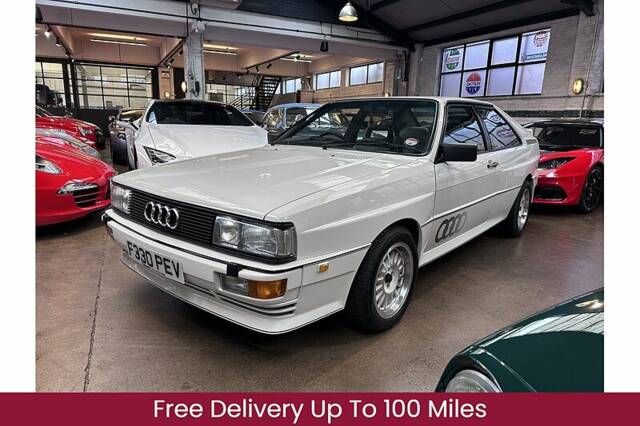
1989 | Audi quattro
Audi Coupe UR Quattro 10v MB Engine
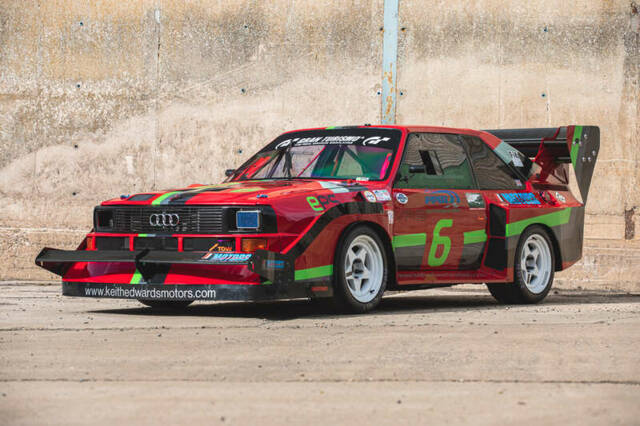
1985 | Audi quattro Sport S1 Evo II (Gruppe B)
1985 Audi S1 E2 Sport Quattro Replica - Pikes Peak Special
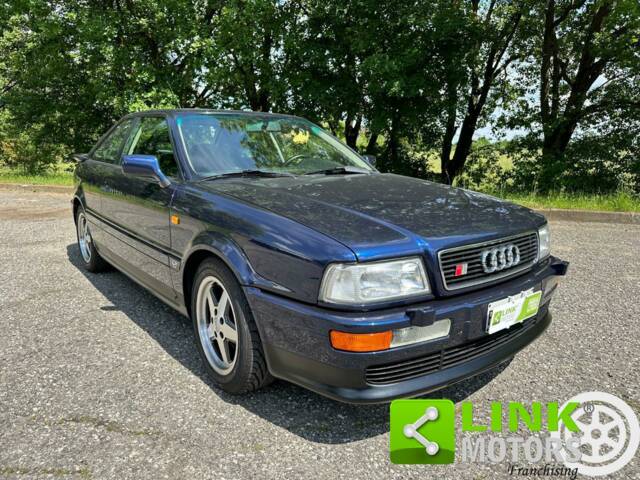
1991 | Audi quattro 20V
AUDI Coupe Coupe 2.2 turbo 20V cat quattro S2
Introduction and history of the Audi quattro
The Audi quattro made its public debut at the 1980 Geneva Motor Show, immediately turning heads as a technological pioneer with its permanent all-wheel drive system coupled with a turbocharged engine. Its origins trace back to winter test drives in 1977, when Audi engineer Jörg Bensinger realised the dynamic advantage of all-wheel drive in challenging conditions. This led to Ferdinand Piëch approving the development of a revolutionary prototype based on the Audi 80 Coupé. The series production car retained much of the prototype’s essence – a 2.1-litre five-cylinder turbo with 200 PS and locking centre and rear differentials. Hand-assembled in small numbers, only around 11,450 units were produced between 1980 and 1991. The quattro was not just a technical experiment—the car quickly rose to international fame as a dominant force in rally competition, setting new engineering standards for the decade. Its distinct shape with widened arches, bespoke bumpers, and rear spoiler further set it apart from regular Coupés. Much of Audi’s future success in all-wheel drive technology directly stemmed from this model.
Model history
The quattro evolved throughout its production run, starting with the 'WR' engine code model (2.1L, 200 PS). Early examples featured analog instruments and characteristic interiors. In 1984, digital dashboards, improved differentials, and significant trim updates appeared, along with features like Recaro sports seats and upgraded electronic systems. The mid-80s saw the arrival of the ‘20V’ model, with a 2.2L engine producing up to 220 PS and enhanced central differential technology. Special versions such as the 'Sport quattro', with shortened wheelbase and immense power output for rallying, marked Audi’s commitment to motorsport. The last vehicles, built in 1991, integrated many updates, including 20-valve heads and advanced electronics. The quattro’s influence continued after production ended—Audi’s use of ‘quattro’ now denotes all-wheel drive across the range, with roots in the original car’s mechanics and approach.
Highlights of the Audi quattro
The quattro’s permanent all-wheel drive and five-cylinder turbo engine marked an engineering breakthrough, defining a template for future sports cars in Europe and beyond. Its rally dominance, especially in the early 1980s, changed motorsport regulations and forced competitors to adapt. Features such as differential locks, galvanised bodyshells, iconic rally-bred wheel arch extensions, and selectable driving modes were far ahead of their time. Several trim and equipment updates followed over the years, with options including digital cluster, heated seats, air conditioning, and unique design cues such as the ‘quattro’ rear window sticker.
Technical data
Special Editions and Collectible Models
The 1984 Audi Sport quattro stands out as the rarest and most powerful development—a homologation model for Group B rally with a shortened chassis, lighter bodywork, unique Kevlar panels, and a 306 PS engine. Only 224 Sport quattros were built. Several other rally homologation and competition specials exist, including official S1 Group B cars (up to 530 PS) and vehicles adapted for Dakar and privateer rally use. Custom conversions by specialist firms (Treser, Artz) resulted in cabriolet and estate variants, further expanding the quattro’s reach.
Weak Spots and Common Issues
Supply of original parts can sometimes be a challenge, particularly for Sport quattro, S1, or specific trim items. Restored or well-maintained cars dominate the market, and care is required when checking body integrity (galvanising began in later production years). Mechanical issues can stem from the complex turbocharging system, especially if previous ownership history is unclear. The K-Jetronic Bosch injection system and differential locks require knowledgeable service for reliability. As with most hand-built classics, electronic and interior components (such as the digital dashboard and electrical relays) can be problem areas if not maintained or restored properly. Documentation, such as service booklets and receipts, strongly supports provenance and value.
Engine and Performance, Transmission and Handling
Turbocharged five-cylinder engines provide a distinct, uneven firing order sound, paired to a five-speed manual and permanent all-wheel drive. The ‘WR’ engine offers 200 PS and 0-100 km/h in 6.7 seconds, while the later 20V model achieves 220 PS and sub-6-second sprints. The quattro system delivers secure traction on all surfaces, and rally heritage is clear in road behaviour—lively front-end grip, adjustable rear, and a chassis tuned for both high-speed stability and agility. Later models benefited from improved brake technology (Girling 60 twin-pot callipers). - Audi quattro WR (2.1L, 200 PS, widest supply and demand)
- Audi Sport quattro (2.1L, 306 PS, shortened/rally chassis)
- Audi quattro 20V (2.2L, 220 PS) Each brings a unique take on the formula—road comfort vs. motorsport purity vs. technological progression.
Interior, Comfort, Exterior and Design
Hand-finished bodyshells with extensive galvanisation (from later years) combined boxy yet purposeful lines. Expanded arches, aggressive bumpers, and the famous rear spoiler differentiate the quattro visually from other Audi coupés. Original alloys came in Ronal 6” and 15" in later versions, with substantial tyre sidewalls enhancing comfort and grip. Interiors received several updates: early models opt for simplicity with analog gauges, transitioning to digital displays and unique fabric (e.g., special checkered or mocha seat patterns), LCD clusters, and Recaro sports seats by mid-80s. Factory options included climate control, heated rear and front seats, and Blaupunkt radios. Colour palettes included Alpine White, Mars Red, Montego Black Metallic, with special combinations and accessories by dealer or market. Functional extras like twin gloveboxes, twin tailpipes, and sportier steering wheels were available dependent on year and specification.
Other relevant features
Audi quattros were delivered in various widths, lengths, and special rally builds. Authentic vehicles retain period-correct paperwork, documentation, and VINs relating to model 85. Accessories found on competition-derived models range from factory fire suppression systems to advanced rally trip computers and auxiliary lighting. Some market-specific specials (like Canada: only 99 delivered, with 16 in 1984) add further intrigue for collectors.
Summary
The Audi quattro stands as a benchmark for engineering breakthroughs in the 1980s, with an impactful rally history and continuous technological influence apparent even in today’s Audi models. Supply and demand statistics affirm the strong presence and ongoing interest in the classic Audi quattro, especially the WR, among enthusiasts and collectors. Each variant, from the hand-built originals to motorsport derivatives, promises a truly individual classic car experience grounded in technical capability and rich history.


